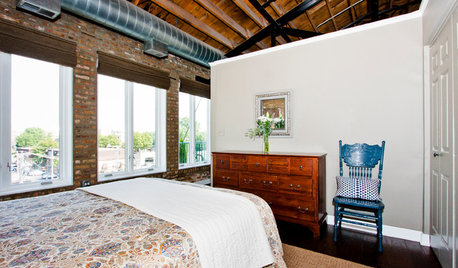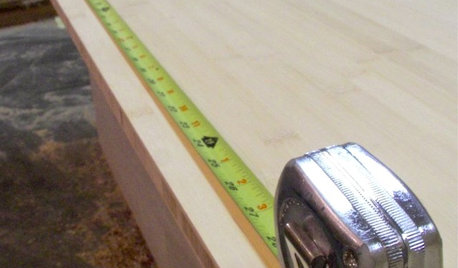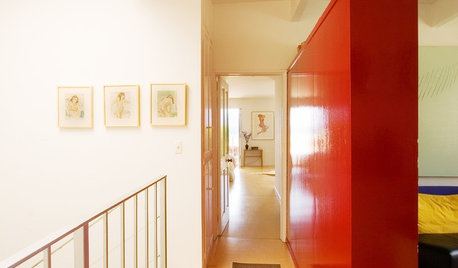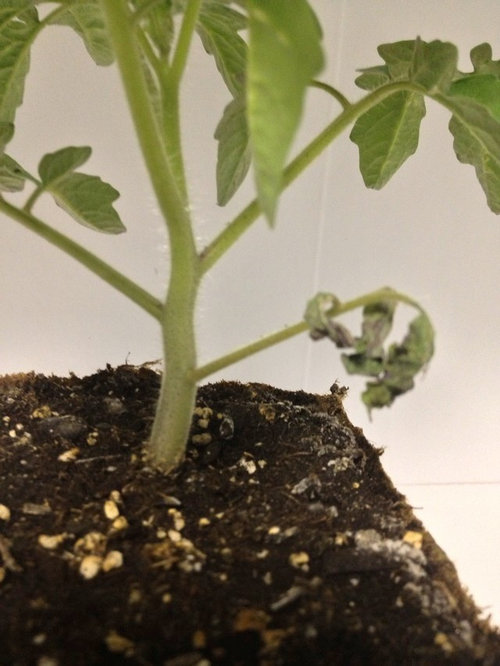Newbie Tomato Question
kbousquet
11 years ago
Related Stories

EDIBLE GARDENSSummer Crops: How to Grow Tomatoes
Plant tomato seedlings in spring for one of the best tastes of summer, fresh from your backyard
Full Story
COLOR10 Reasons to Make a Splash With Tomato Red
You won’t duck at these tomatoes. See how bold red shades can play up architecture, light up a dark spot and add drama
Full Story
KITCHEN DESIGN9 Questions to Ask When Planning a Kitchen Pantry
Avoid blunders and get the storage space and layout you need by asking these questions before you begin
Full Story
SMALL HOMESHouzz Tour: An Illinois Loft Sparks Renovation Fever
Home improvement newbies (and newlyweds) find joy and a new income source while redoing their space themselves
Full Story
WOODWORKING7 Must-Have Measuring Tools for Woodworking
Whether you're a newbie DIYer or building cabinets from scratch, using the right woodshop tools makes all the difference
Full Story
FARM YOUR YARDHouzz Call: Home Farmers, Show Us Your Edible Gardens
We want to see where your tomatoes, summer squashes and beautiful berries are growing this summer
Full Story
FURNITURESmart Shopper: How to Judge Antique Furniture Quality
Pick the treasures from the trash without expert experience by learning how to evaluate antiques and what questions to ask
Full Story
MOST POPULAR10 Things to Ask Your Contractor Before You Start Your Project
Ask these questions before signing with a contractor for better communication and fewer surprises along the way
Full Story
WALL TREATMENTSPick the Right Paint Finish to Fit Your Style
The question of finish may be as crucial as color. See which of these 9 varieties suits your space — and budget
Full Story
FARM YOUR YARDHow to Build a Raised Bed for Your Veggies and Plants
Whether you’re farming your parking strip or beautifying your backyard, a planting box you make yourself can come in mighty handy
Full StorySponsored
More Discussions







kbousquetOriginal Author
kbousquetOriginal Author
Related Professionals
Benbrook Landscape Architects & Landscape Designers · Fair Oaks Landscape Contractors · Glendale Heights Landscape Contractors · Lemont Landscape Contractors · New Braunfels Landscape Contractors · Sammamish Landscape Contractors · Wentzville Landscape Contractors · Country Club Hills General Contractors · Gallatin General Contractors · Murrysville General Contractors · Norfolk General Contractors · Redan General Contractors · Gaithersburg Decks, Patios & Outdoor Enclosures · Salt Lake City Decks, Patios & Outdoor Enclosures · Somerville Decks, Patios & Outdoor Enclosurespasco
kbousquetOriginal Author
missingtheobvious
kbousquetOriginal Author
kbousquetOriginal Author
digdirt2
Raw_Nature
digdirt2
kbousquetOriginal Author
digdirt2
kbousquetOriginal Author